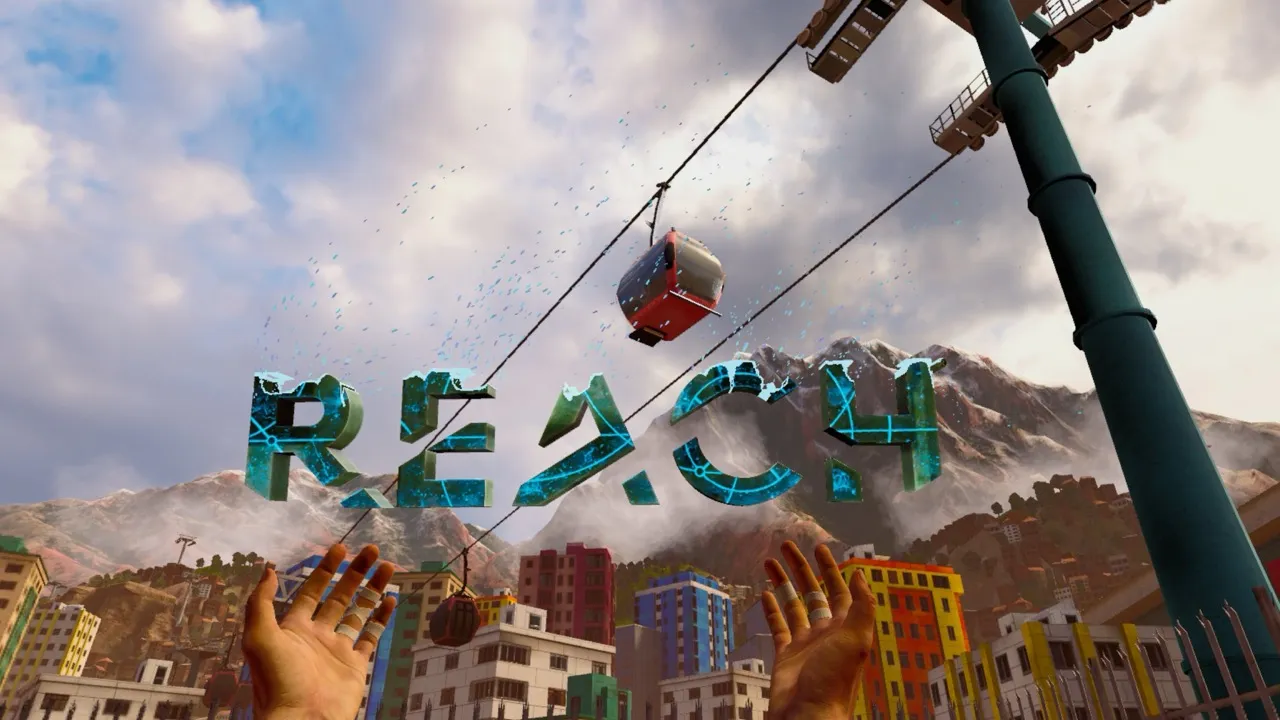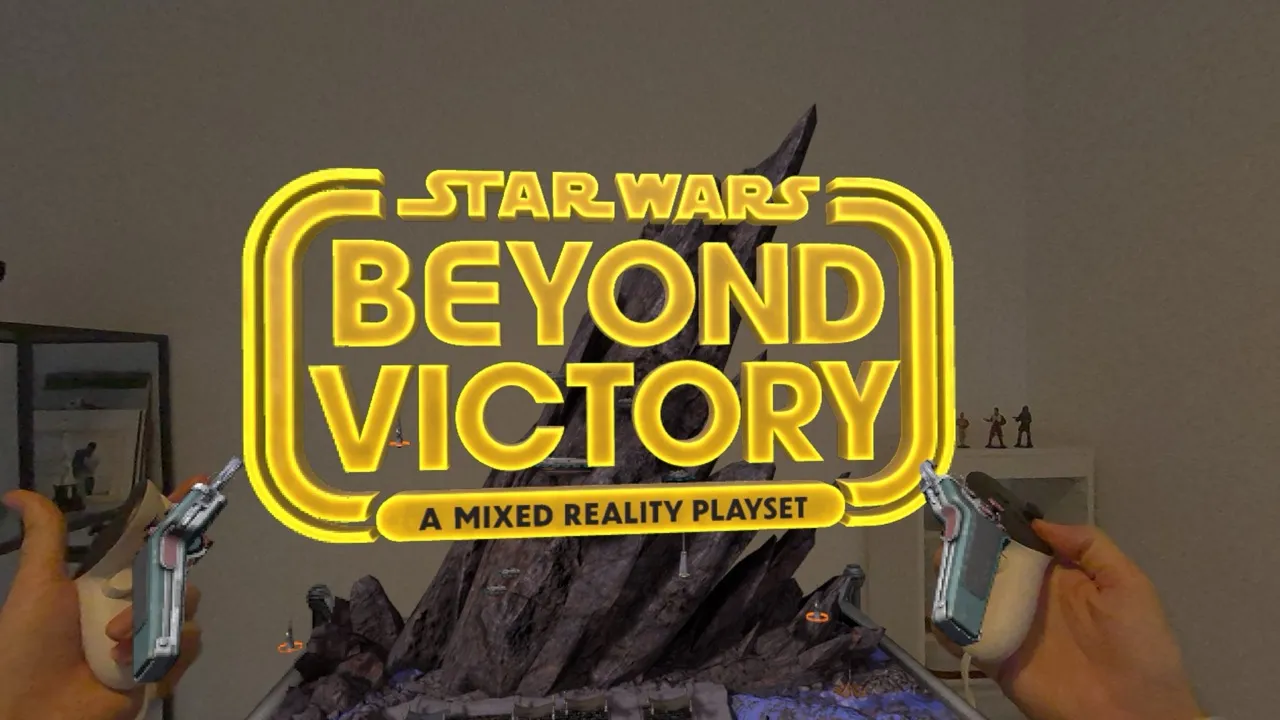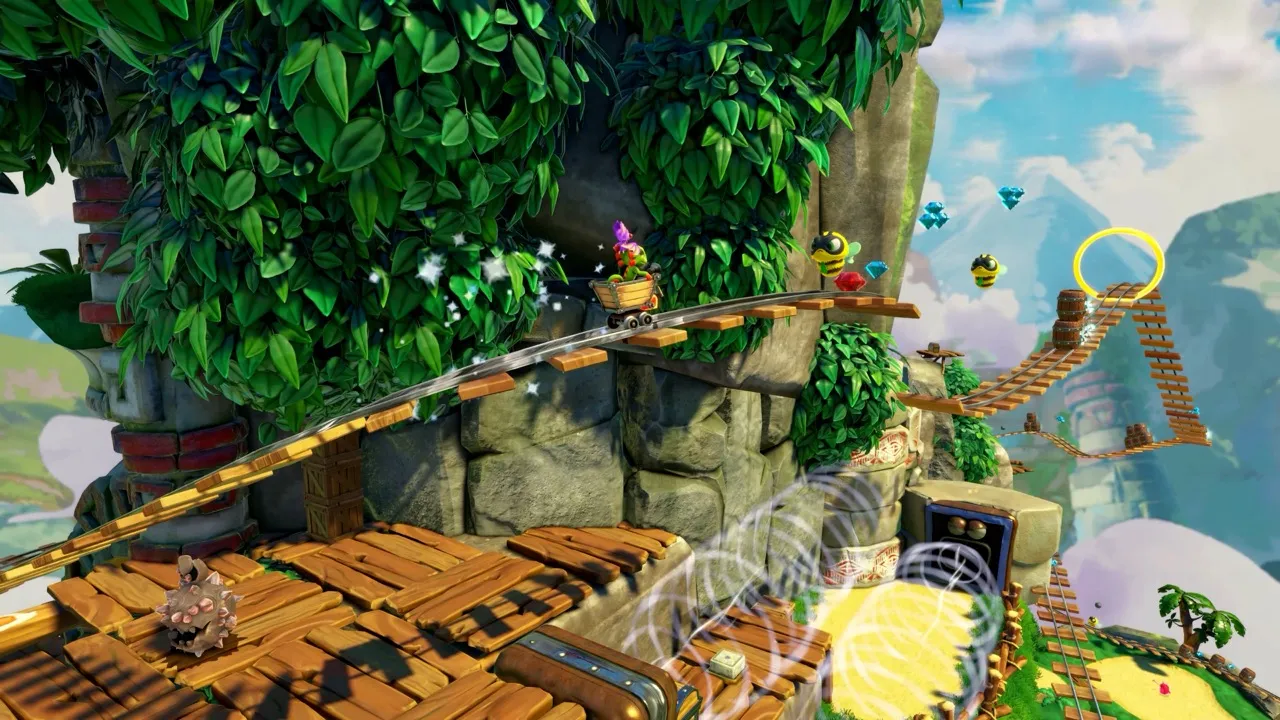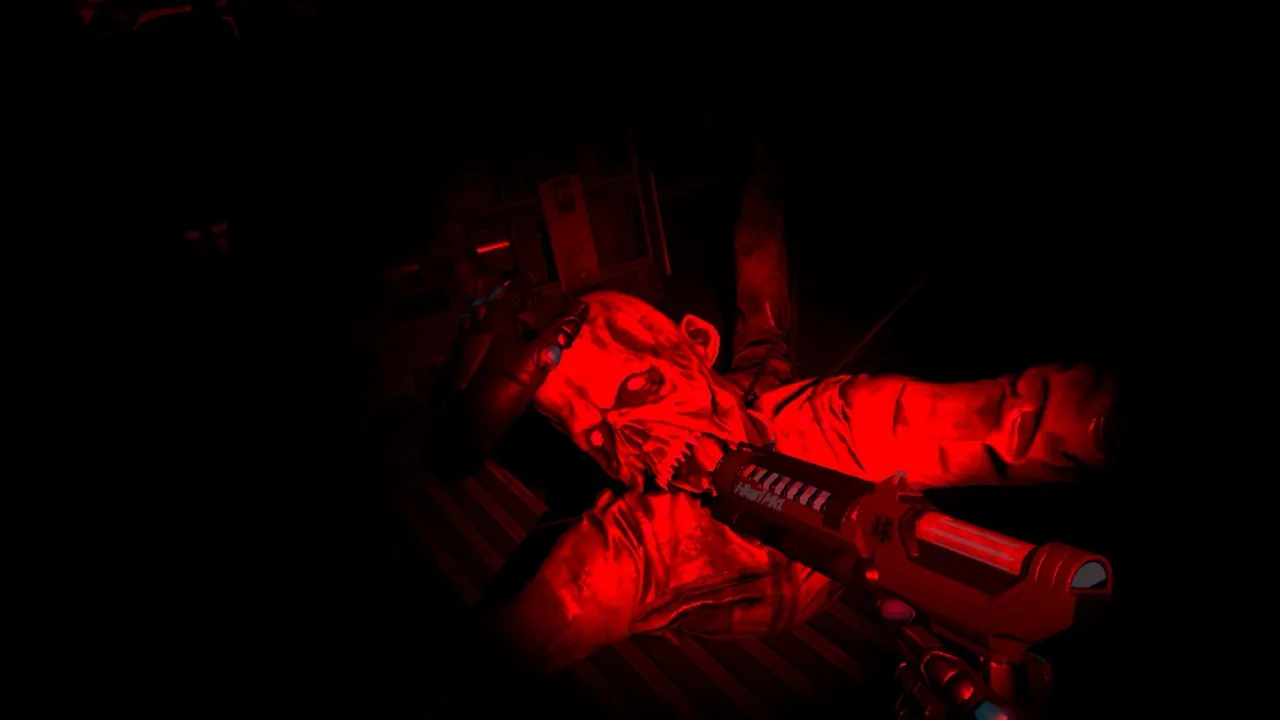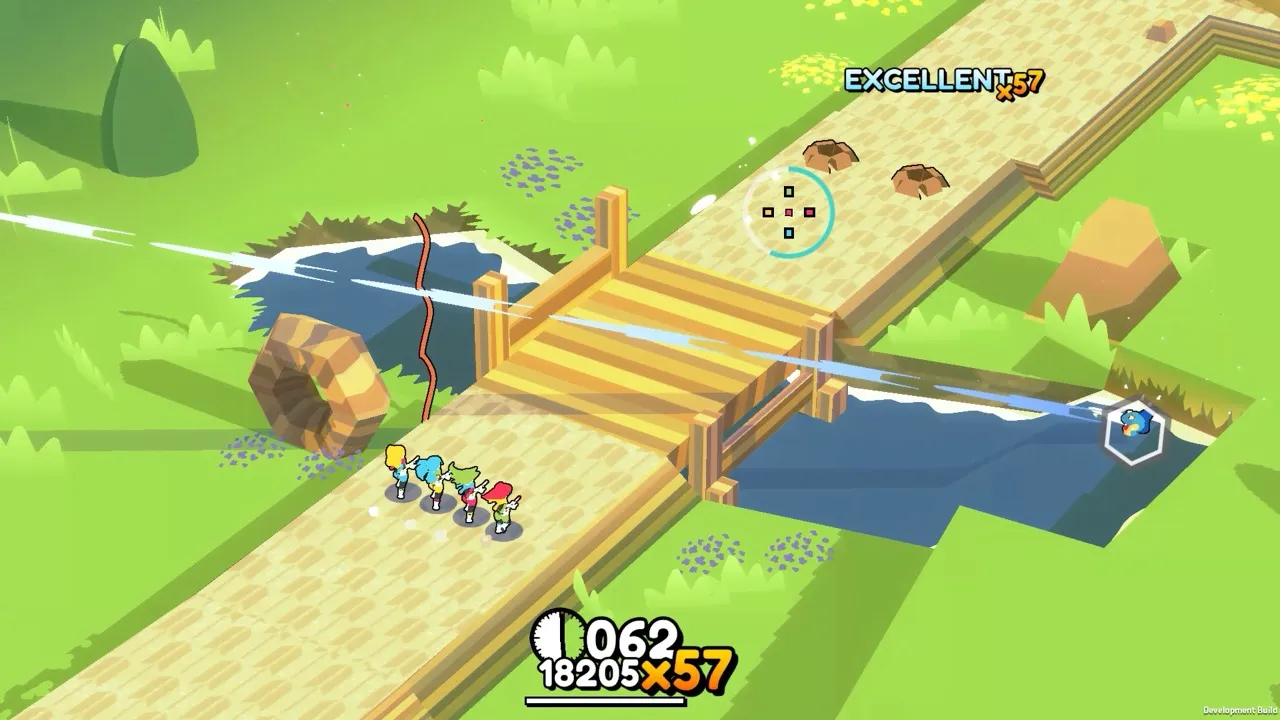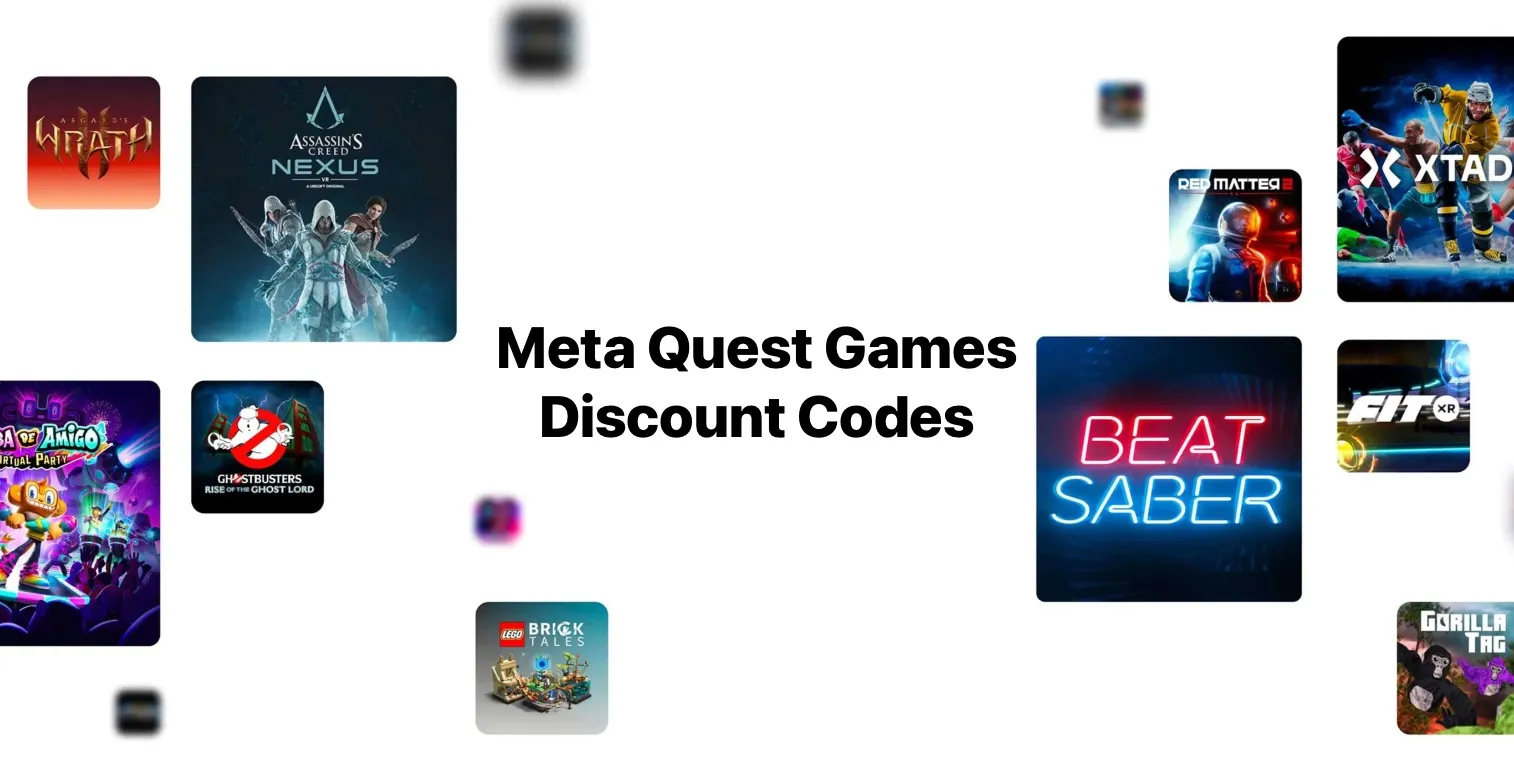Reach is a breathtaking leap forward for what VR can feel like, and once you experience it, every other movement system will feel a little less satisfying
Every once in a while, a VR title comes along that redefines how we think about physicality and immersion in virtual worlds. Reach by NDreams is one of those rare experiences. It is bold, it is exhilarating, and it is easily one of the best games you can play in VR this year. What NDreams has achieved here is remarkable — not just technically, but in how natural and empowering it feels to simply move inside this world.
You play as Rosa, a determined stuntwoman navigating a mysterious underground civilization full of secrets, ancient technology, and towering stone guardians. After a cataclysmic event destroys Rosa's home city and reveals a new world beneath the surface, you're paired with Atlas, a massive living statue who acts as your mentor and companion throughout the adventure. The banter between Rosa and Atlas is consistently entertaining, heartfelt, and surprisingly human. Their chemistry is the emotional glue that keeps the story grounded amidst all the chaos and climbing.
Watch this TikTok video
Atlas, with his booming voice and strange wisdom, feels like something out of a myth brought to life. Rosa, by contrast, is witty and daring, unafraid to poke fun at her giant stone friend. The voice acting is exceptional across the board, and NDreams deserves credit for giving VR characters genuine depth.
The story itself unfolds gradually as you traverse massive temples, caverns, and crumbling ruins, each filled with remnants of an ancient culture. The narrative touches on ambition, discovery, and what it means to go beyond one's limits, thematically fitting for a game so focused on movement and momentum.
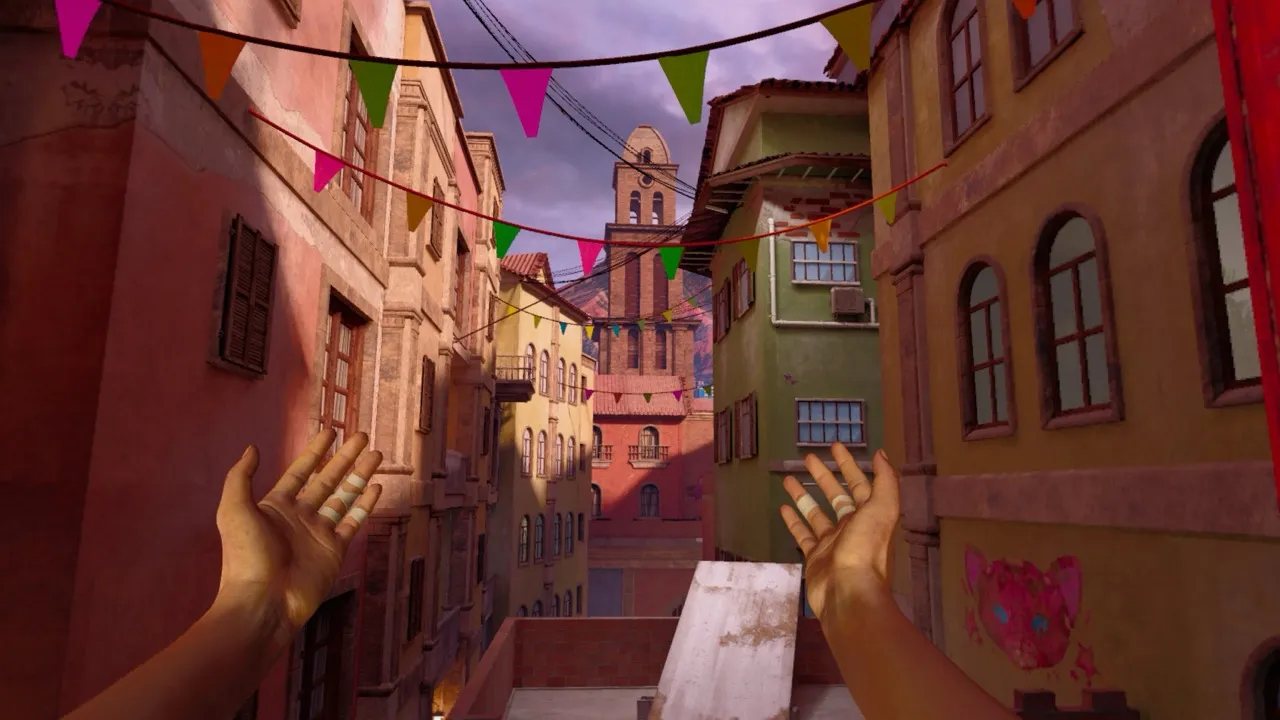
The heart of Reach lies in its traversal. Running, jumping, climbing, and grappling feel incredibly natural. Every motion is perfectly tuned, every grab point feels precise, and chaining these movements together becomes almost meditative once you get into the flow. The parkour system is the best I have experienced in VR so far.
It starts simple, just pulling yourself up ledges or jumping across small gaps, but before long you're chaining together wild sequences that make you feel like a superhero. You sprint toward a ledge, leap into the air, fling your shield into a wall, grapple toward it, then climb higher while dodging collapsing debris. The fluidity of these movements is jaw-dropping.
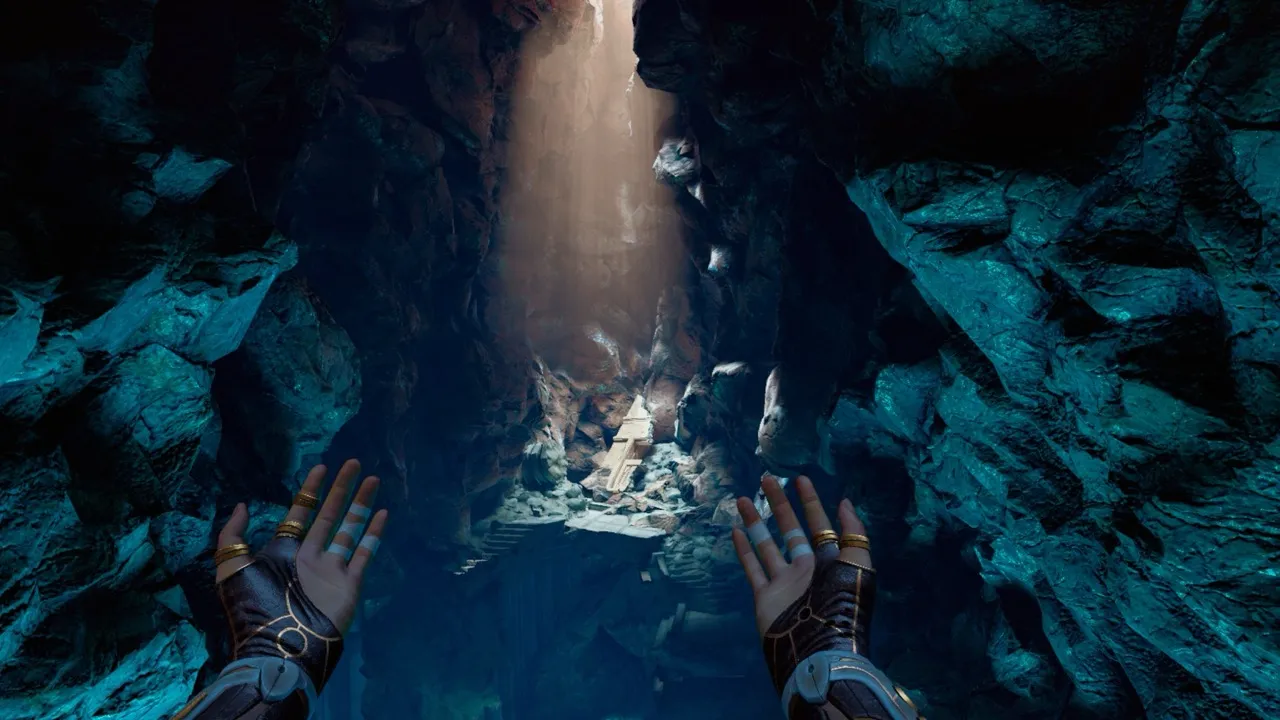
NDreams has done something special with how the VR body behaves. Rosa's legs position themselves realistically while climbing or running, giving you a sense of physical presence that few other VR games manage to pull off. It's a small detail that makes a huge difference in immersion.
Then come the chase sequences, fast-paced, adrenaline-pumping set pieces where you must parkour through crumbling environments while avoiding enemies or traps. These moments are chaotic and thrilling, the kind of sequences that make you instinctively lean forward in real life. The music picks up, you enter the flow state, and that's when Reach becomes pure bliss.
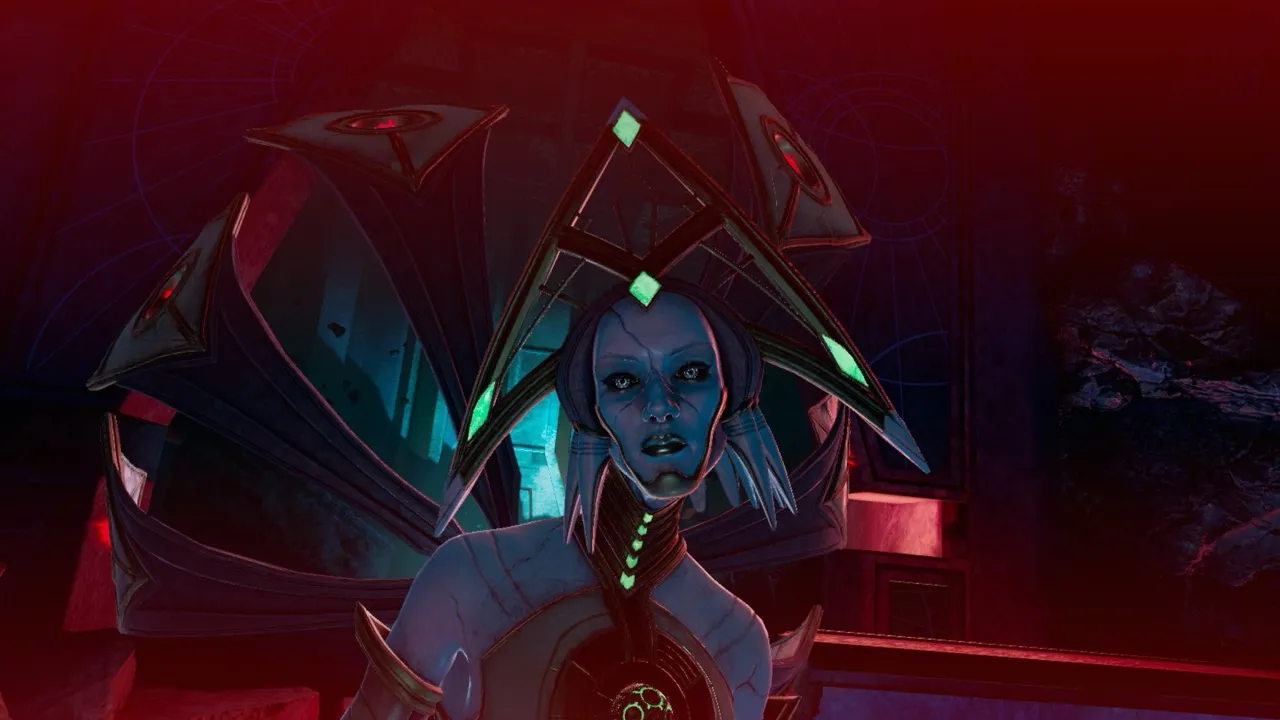
Rosa's shield is a versatile tool that feels solid, weighty, and responsive, with satisfying physics. As you progress, you unlock new abilities for the shield, opening up more creative ways to navigate and fight. It's not just a weapon — it's an extension of your body.
You can throw it at enemies to knock them out, use it as a grappling anchor to swing across gaps, or hold it up to block attacks. Seeing it bounce around the environment in a realistic way never gets old and it's probably the thing you'll do when you wait for characters to finish their dialog. Also, NDreams, you are making a Captain America VR game, correct? If you are not, please do cause these shield physics are sublime.
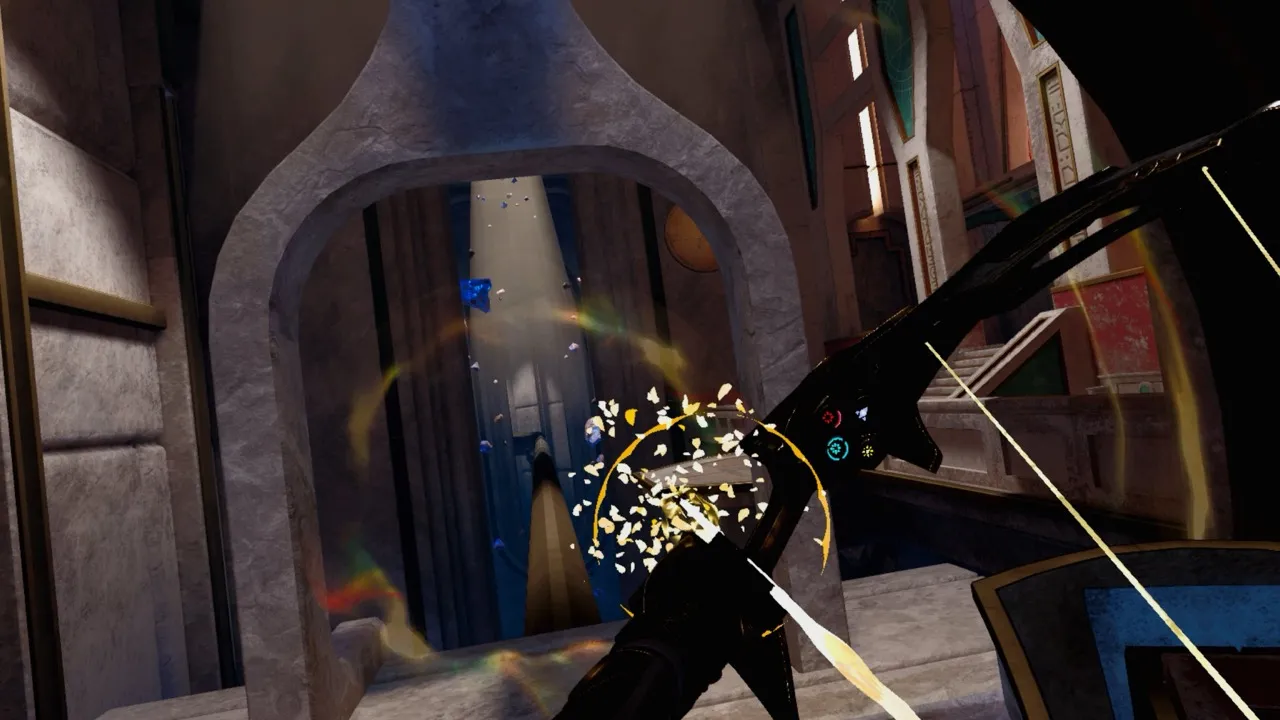
Then there's the bow. It comes with infinite arrows and a clever twist: you can crush glowing insects in your hand to infuse arrows with special properties. Fire arrows can explode, ice arrows can freeze, and electric ones can stun enemies. If you shock an enemy, you can even grab their weapon midair and use it for a devastating one-shot kill.
Combat itself is fun, though it doesn't quite reach the same level of brilliance as the movement. The bow mechanics feel great, and combining special arrows adds some strategy, but the enemy AI leaves something to be desired. They often stand in place or shoot predictably from a distance, which makes encounters easy to exploit. It's not bad by any means, but it lacks the tension or dynamism seen in something like Arken Age.
Still, when the game leans into its strengths, speed, agility, and environmental combat, it's sublime.
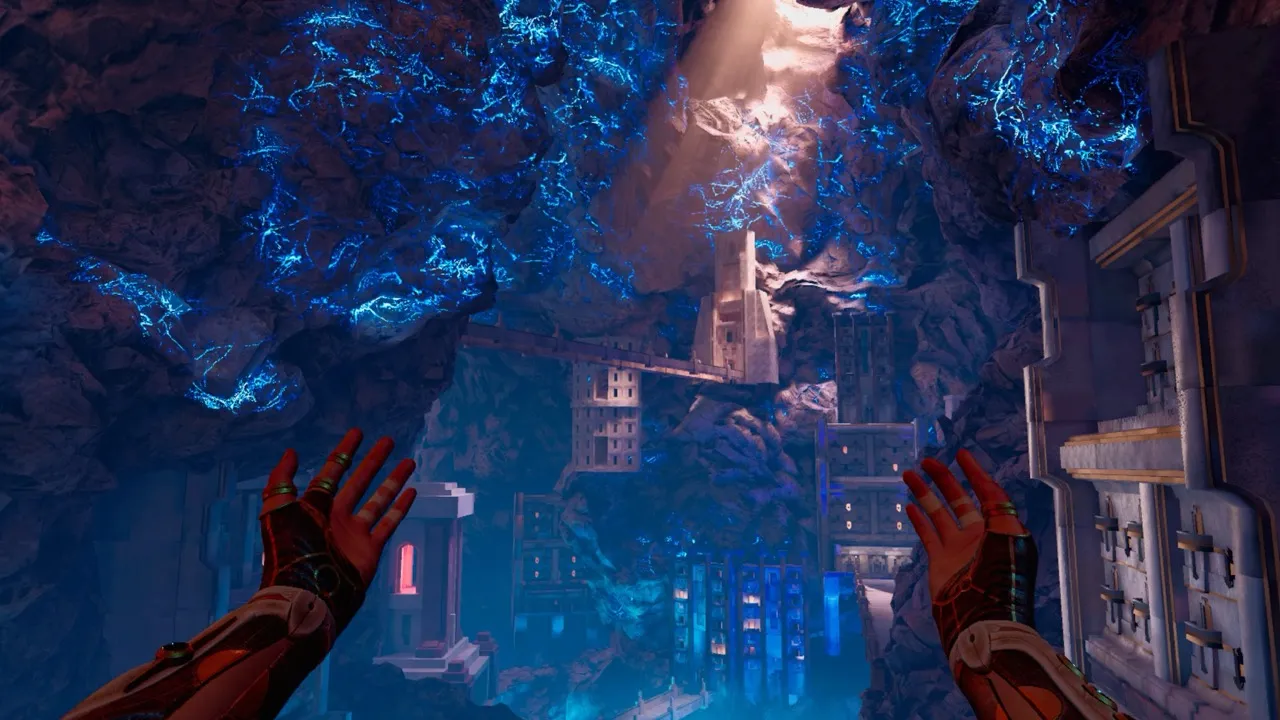
Reach is stunning. The underground "alien" world you explore feels vast and mysterious, filled with massive temples, glowing ruins, and strange bioluminescent flora. The art direction perfectly balances ancient mysticism with futuristic decay, creating a world that feels both familiar and otherworldly.
Lighting plays a huge role here. Shafts of light cut through dust and fog, casting long shadows across the stone architecture. It's impressive that all of this runs natively on Quest 3, with sharp textures and smooth performance throughout.
The character models are equally impressive. Atlas and Lithos are beautifully animated with intricate details and a real sense of mass. Sound design is another highlight. The world hums and echoes with ancient energy, while the score swells at just the right moments to make your leaps and discoveries feel cinematic.
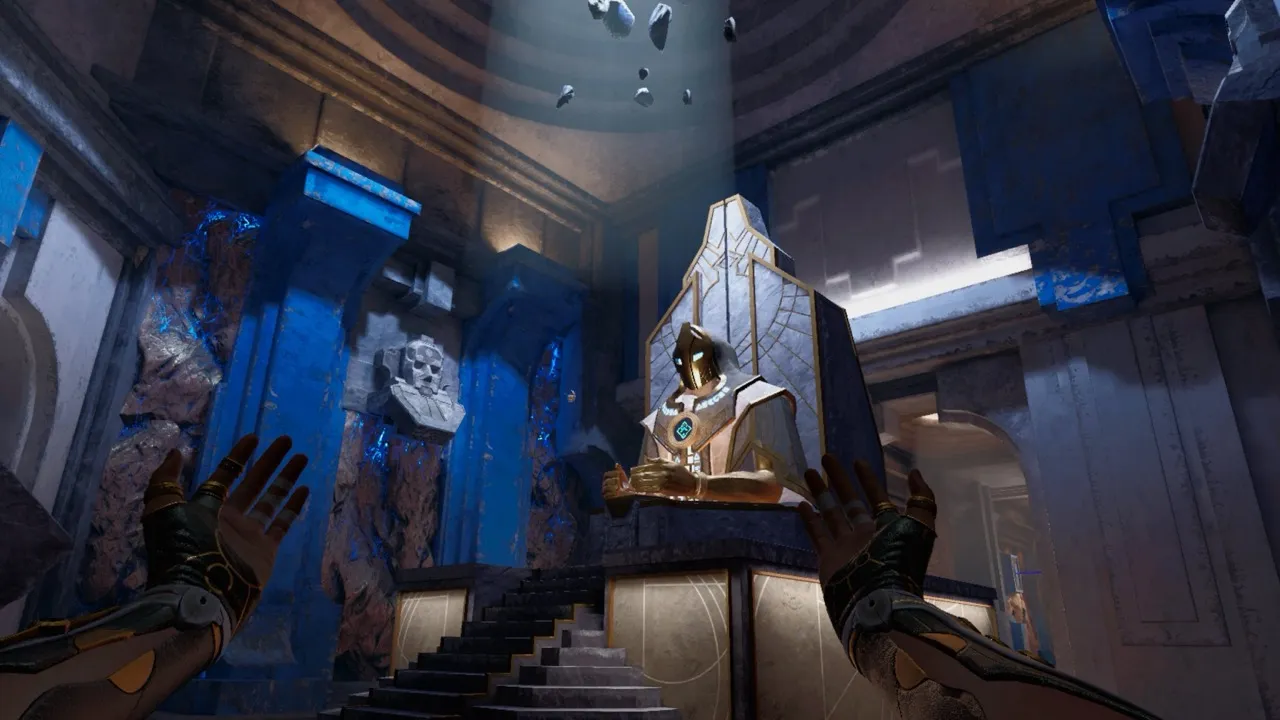
For all its brilliance, Reach isn't perfect. The game suffers from some frustrating bugs that can seriously impact the experience. Softlocks can happen surprisingly easily, leaving you trapped between a locked door and a gap too wide to jump like it happened to me. Sometimes reloading a checkpoint fixes it, but not always. In my case, I had to spend an hour trying to clip through the level just to continue my playthrough.
There was also an instance where an invisible wall blocked my path, and it only resolved after several reloads. What makes these bugs particularly annoying is that the game only lets you reload your most recent save. This means that if you get stuck and the last checkpoint is where you got stuck, you might have to restart the entire game from the beginning.
To NDreams' credit, these are fixable issues, and hopefully a future patch might improve the loading allowing you to select from multiple saves and also a chapter select feature would come in clutch if you get softlocked. But for now, my advice to players is simple: don't try to skip puzzles or force your way through locked paths. Be patient, take it slow, and let the mechanics work as intended.
Also, for some bizarre reason, the game will not launch properly if you have the Virtual Desktop app installed on your Quest headset. It's one of the strangest compatibility issues I've ever seen in a VR title, and it absolutely needs to be addressed.
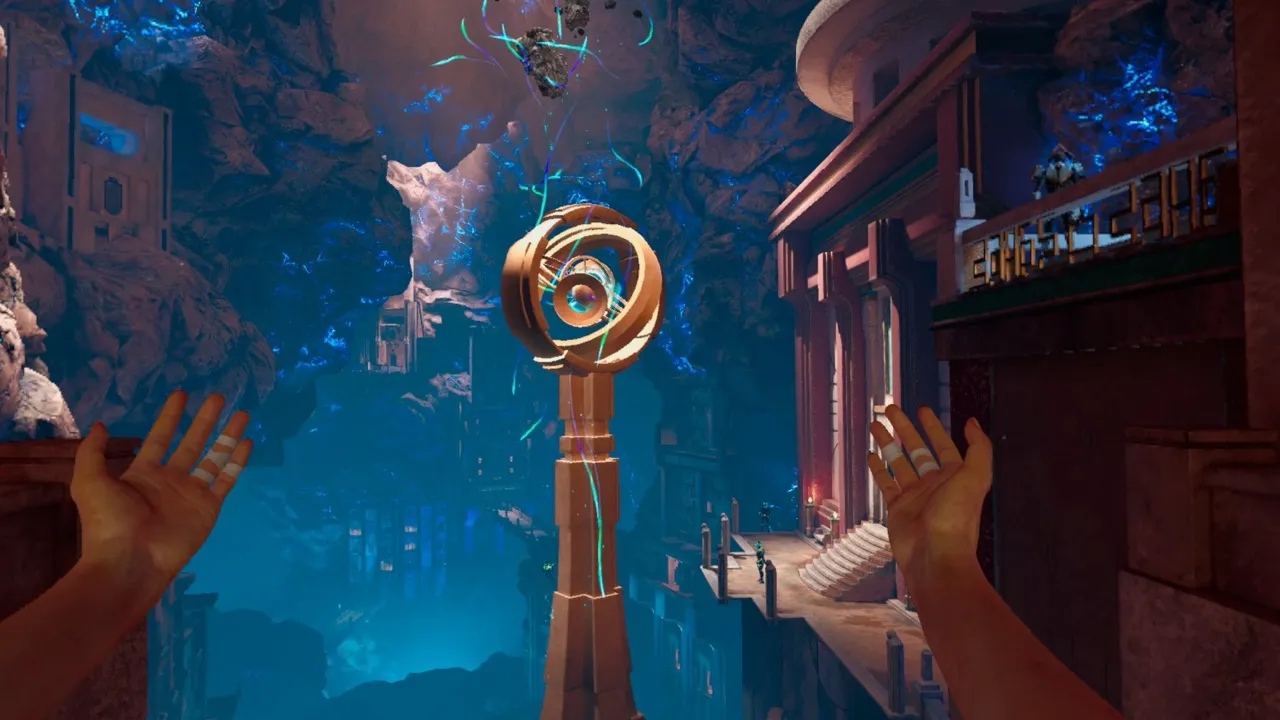
Despite these bugs and quirks, Reach is a triumph. It is one of the most immersive, thrilling, and beautifully designed VR adventures available today. Every time you climb a wall, every time you throw your shield into the distance, every time you make a death-defying leap, you feel it in your body. That's the magic of Reach.
The combination of exceptional traversal mechanics, strong characters, and a visually stunning world makes this an unforgettable experience. It's not just about getting from point A to B, it's about the journey, the feeling of actually reaching for something beyond yourself.
NDreams has delivered something truly special here. Even with its technical hiccups, Reach stands tall as a must-play for any Quest 3 owner. Few VR games capture the sense of freedom, discovery, and physicality quite like this one. If you own a Quest 3, Reach isn't just worth playing, it's essential. It's a breathtaking leap forward for what VR can feel like, and once you experience it, every other movement system will feel a little less satisfying. Thanks for reading!
The game was reviewed on a Quest 3S via a promo copy provided by the developer. Reach is available on Meta Quest, PCVR and PSVR2.
